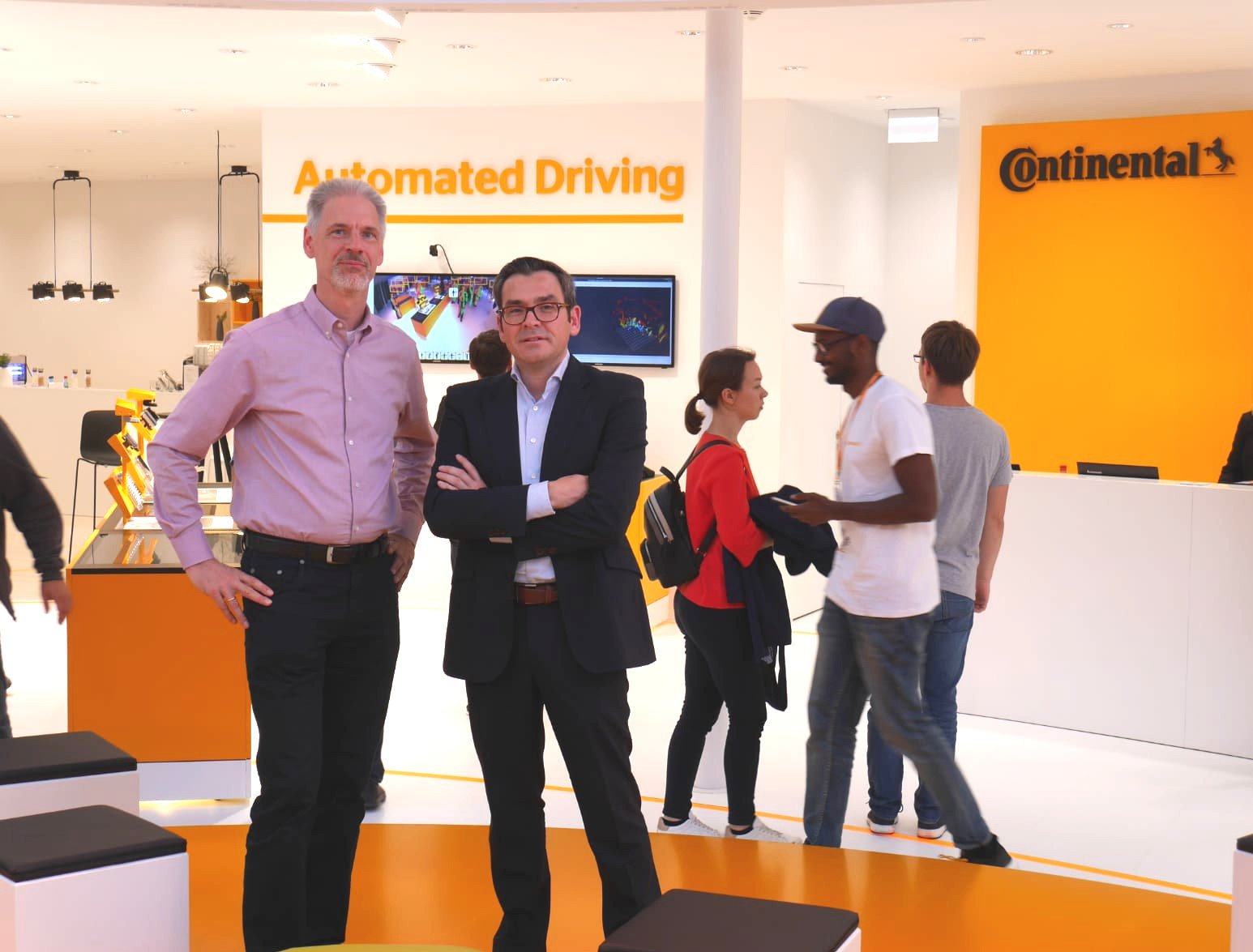Pictures of the future as an indicator of corporate development

As in previous years, ScMI was present at the International automobile exhibition in Frankfurt. Continental AG presented its vision of the mobility of the future to the expert audience on the basis of a "Future Perspective" developed with ScMI AG. Based on a comprehensive trend analysis, a computer-animated picture of mobility in the city of the future is drawn. This creates a spotlight for targeted product and future design in the company.
Mobility is changing - that much is certain. On the other hand, there is often disagreement about how it is changing, even within a company. This is not only due to the diverse, dynamic framework conditions, but also due to the sheer number of innovation ideas, which are already predicted to have a great influence on mobility concepts. The diversity and divergence of ideas stands in the way of a clear focus on a common goal.
How can clear objectives and visions be formed in dynamic environments?
First of all, it is necessary to systematize knowledge about the future. With regard to the description of a long-term vision of the future, there are two methodological alternatives.
First, different future scenarios can be developed in a group dynamic process. Here, the diverging future visions of the employees become immediately visible and lead to the description of a future space that systematizes the alternative mobility pictures of the future. Through a joint interpretation and evaluation process, a dominant vision of the future is then selected, which forms the core of a common vision.
Secondly, a common trend picture can be developed as an alternative. In this case, a broad-based scanning of recognizable or conceivable future trends is first carried out. These can be obtained through interviews and surveys as well as through the evaluation of existing databases and research results. As a rule, an almost unmanageable number of fragments of a picture of the future can be found. These must be systematized and prioritized in order to form a common vision. By examining the interdependencies between the individual trends, a trend landscape can be generated that reveals essential clusters as well as possible contradictions. In a joint discussion of this map, consensus can be formed on the essential core trends. This also creates a common vision of the future. The outlined approach of the trend landscape was chosen in the example of Continental "Future Perspectives".
What are the differences between a scenario and a trend analysis?
Basically, both methods can be applied successfully. However, the pure analysis of trends can be too narrowly. Thus it can happen, that conceivable future visions are already excluded at the beginning. The discussion is therefore less open to the future. A false sense of security is created by ignoring any uncomfortable developments and concealing the complexity of the future. Within the framework of scenario analysis, however, the risks of focusing on a selected target image can be examined by comparing them with alternative scenarios. Trend analysis, on the other hand, is more targeted. By focusing on the description of a trend picture right in the beginning, forces are bundled on the description of a vision and general discussions are rather avoided.
What are the benefits of the vision picture and the keys to success in its implementation?
A common understanding about a normative picture of the future is able to stimulate ideas in the company and at the same time effectively bundle forces on one target. In this way, potential "value spots" for the company can be identified within the vision of the future. By a subsequent quantification of these future potentials, a substantial contribution to the future positioning is made. An important factor for success is the visualization of the picture of the future through images, animations or virtual reality. Here two essential aspects are primarily considered.
On the one hand, the visualization forces the company to become concrete. Abstract descriptions of a future are not sufficient for a visual representation. Trends and developments must be translated into visible products and applications. However, this sometimes exhausting process of searching for so-called manifestations represents an enormous added value, since it clearly uncovers existing weaknesses in the picture of the future.
On the other hand, the visualization closes the gap between the creation of future visions and their application. Only if the future can be experienced, employees can be won for the realization of this goal or workshops for the derivation of suitable response strategies or innovations can be carried out purposefully and efficiently. The animated "Future Perspective" on the future of mobility has proven to be a valuable management tool for Continental. In the city of the future, general trends such as "autonomous logistics systems" will initially become tangible through the presentation of walking robots for parcel delivery.
How can future images be visualized by the ScMI?
The ScMI AG has extensive competences in the development of pictures of the future on the basis of trends and scenarios. ScMI has numerous partnerships for the medial representation of these pictures. Among others, ScMI cooperates with the company "Zielbildner". The Wiesbaden-based company has specialized in the visualization of future images and strategies and closes the gap between future analysis and communication. For this purpose, defined images are analyzed in detail, translated into concise visualization concepts and then realized.







